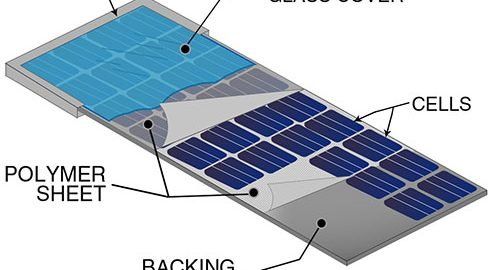The sun is a source of inexhaustible energy that can keep our solar energy endeavor going for billions of years. By using solar panels and accessories, you can get an endless supply of clean, green energy that will cost you less and less with time unlike conventional electricity resources that are becoming more expensive by the day. With global warming becoming a growing threat to our environment, it is only a matter of time that solar power replaces the need for a renewable form of energy. Have you ever wondered how solar energy works? What is the technology involved in converting sunlight into solar energy?
A concise description of how solar panels work would be something like this:
A solar panel is an arrangement of specialized non-reflective glass that contains silicon beneath it. They are technically known as photovoltaic (PV) panels. It is designed to collect photons from the sun and convert them into DC or Direct Current electricity which flows through an inverter to get converted into AC or Alternating Current electrical power that we use to power appliances in our homes and offices.
Solar Panel Components
If we break the solar panel down, we will find that it is made of solar cells. These are electronic devices that have the ability to convert sunlight directly into electricity. Solar cells combine together to form large units called solar modules. They in turn can be combined to form solar panels. The potential of the solar panels can be affected by factors like latitude, elevation, cloud cover, obstruction and shading.
The Related Accessories
The equipment that forms part of the solar installation, apart from the solar panels, includes the inverter, racks, monitors, and the battery storage system. When sunlight hits the solar panels, the silicon and conductors in the panel get activated to convert light into direct current electricity. This is directed towards the inverter. The direct current is converted by the inverter into alternating current which is used in your home.
Additional electricity that the solar panel produces and that’s not of use for your personal consumption gets directed to the grid. Alternately, if the output of the solar panel falls short of your requirement, electricity can be drawn from the grid to power your appliances.
A bi-directional meter forms an important element of the working of solar panel systems. It keeps track of the power produced by your solar panel. Metering is done automatically. The extra electricity produced by your solar energy system is credited to your bill.
Advantages Of Using Solar Energy System
There are many advantages of solar energy system. You can save money in the long term and also do your bit for saving the environment. One of the most relevant benefits is the cost certainty factor as you can lock in your electricity rate for many years. With utility bills rising continuously, the ability to lock electricity rate for as much as 20-25 years can help you save money in a big way. Solar panels also increase the value of your home.
Here are some interesting solar energy facts:
- Solar panels first appeared in the market in 1956
- Photovoltaic power systems were used in space programs way back in 1958. They are used even today.
- Demand is greater than supply for solar energy systems
- They require little maintenance and can last for decades when handled properly
- Newly constructed homes will have solar panels as a standard addition
California takes the credit for having the largest solar power plant in the world. There are nine solar thermal plants covering an area of 1000 acres in the Mojave Desert. The City of Glendale, CA leads the solar panel installations in the US. There are several federal and state government initiatives and programs being offered to encourage homeowners to go solar.








